Hyongsuk Kim
Embracing Limited and Imperfect Data: A Review on Plant Stress Recognition Using Deep Learning
May 19, 2023Abstract:Plant stress recognition has witnessed significant improvements in recent years with the advent of deep learning. A large-scale and annotated training dataset is required to achieve decent performance; however, collecting it is frequently difficult and expensive. Therefore, deploying current deep learning-based methods in real-world applications may suffer primarily from limited and imperfect data. Embracing them is a promising strategy that has not received sufficient attention. From this perspective, a systematic survey was conducted in this study, with the ultimate objective of monitoring plant growth by implementing deep learning, which frees humans and potentially reduces the resultant losses from plant stress. We believe that our paper has highlighted the importance of embracing this limited and imperfect data and enhanced its relevant understanding.
CWD30: A Comprehensive and Holistic Dataset for Crop Weed Recognition in Precision Agriculture
May 17, 2023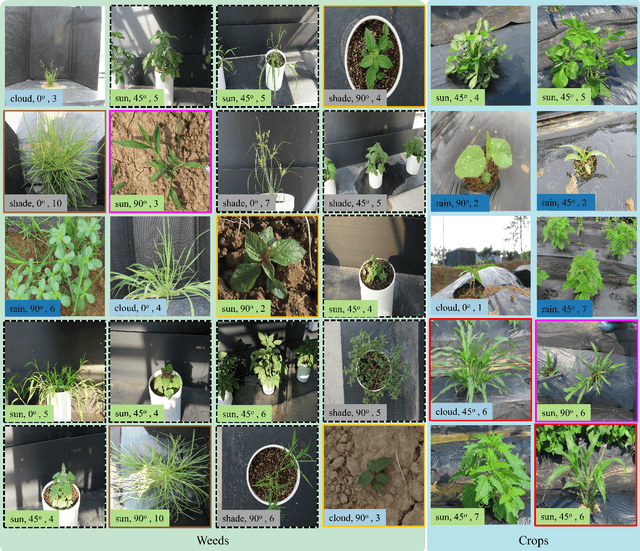
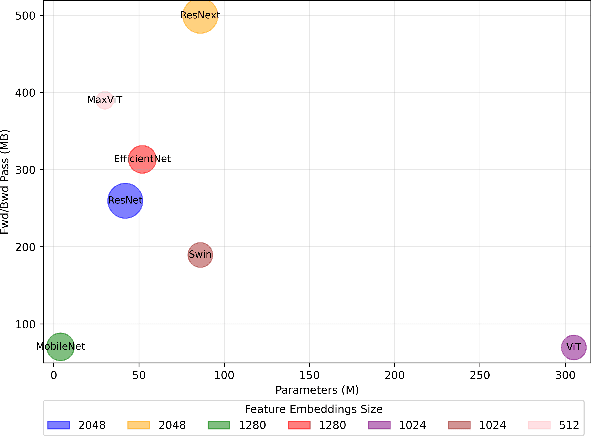
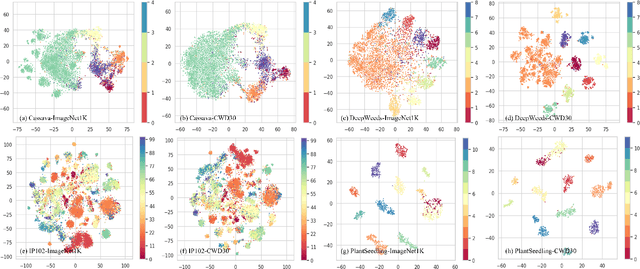
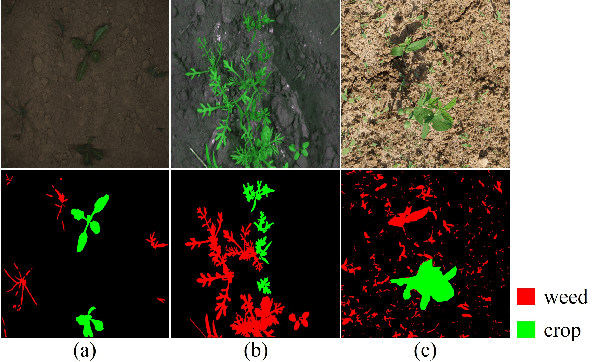
Abstract:The growing demand for precision agriculture necessitates efficient and accurate crop-weed recognition and classification systems. Current datasets often lack the sample size, diversity, and hierarchical structure needed to develop robust deep learning models for discriminating crops and weeds in agricultural fields. Moreover, the similar external structure and phenomics of crops and weeds complicate recognition tasks. To address these issues, we present the CWD30 dataset, a large-scale, diverse, holistic, and hierarchical dataset tailored for crop-weed recognition tasks in precision agriculture. CWD30 comprises over 219,770 high-resolution images of 20 weed species and 10 crop species, encompassing various growth stages, multiple viewing angles, and environmental conditions. The images were collected from diverse agricultural fields across different geographic locations and seasons, ensuring a representative dataset. The dataset's hierarchical taxonomy enables fine-grained classification and facilitates the development of more accurate, robust, and generalizable deep learning models. We conduct extensive baseline experiments to validate the efficacy of the CWD30 dataset. Our experiments reveal that the dataset poses significant challenges due to intra-class variations, inter-class similarities, and data imbalance. Additionally, we demonstrate that minor training modifications like using CWD30 pretrained backbones can significantly enhance model performance and reduce convergence time, saving training resources on several downstream tasks. These challenges provide valuable insights and opportunities for future research in crop-weed recognition. We believe that the CWD30 dataset will serve as a benchmark for evaluating crop-weed recognition algorithms, promoting advancements in precision agriculture, and fostering collaboration among researchers in the field.
Variation-Aware Semantic Image Synthesis
Jan 25, 2023Abstract:Semantic image synthesis (SIS) aims to produce photorealistic images aligning to given conditional semantic layout and has witnessed a significant improvement in recent years. Although the diversity in image-level has been discussed heavily, class-level mode collapse widely exists in current algorithms. Therefore, we declare a new requirement for SIS to achieve more photorealistic images, variation-aware, which consists of inter- and intra-class variation. The inter-class variation is the diversity between different semantic classes while the intra-class variation stresses the diversity inside one class. Through analysis, we find that current algorithms elusively embrace the inter-class variation but the intra-class variation is still not enough. Further, we introduce two simple methods to achieve variation-aware semantic image synthesis (VASIS) with a higher intra-class variation, semantic noise and position code. We combine our method with several state-of-the-art algorithms and the experimental result shows that our models generate more natural images and achieves slightly better FIDs and/or mIoUs than the counterparts. Our codes and models will be publicly available.
Inception Architecture and Residual Connections in Classification of Breast Cancer Histology Images
Dec 10, 2019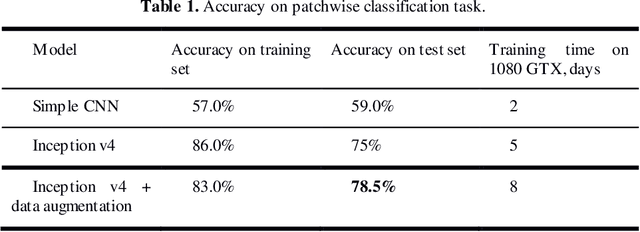
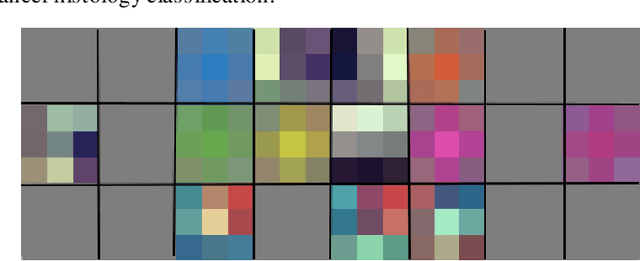
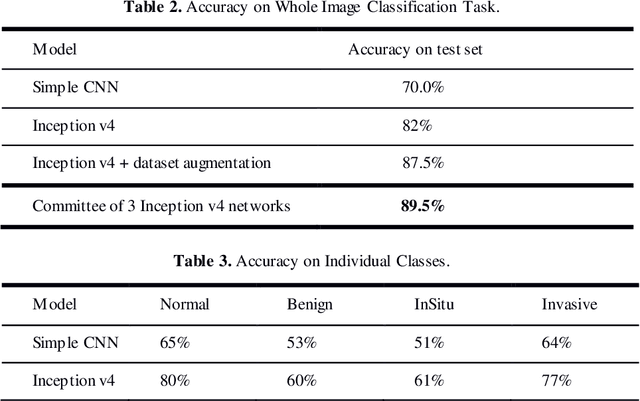
Abstract:This paper presents results of applying Inception v4 deep convolutional neural network to ICIAR-2018 Breast Cancer Classification Grand Challenge, part a. The Challenge task is to classify breast cancer biopsy results, presented in form of hematoxylin and eosin stained images. Breast cancer classification is of primary interest to the medical practitioners and thus binary classification of breast cancer images have been under investigation by many researchers, but multi-class categorization of histology breast images have been challenging due to the subtle differences among the categories. In this work extensive data augmentation is conducted to reduce overfitting and effectiveness of committee of several Inception v4 networks is studied. We report 89% accuracy on 4 class classification task and 93.7% on carcinoma/non-carcinoma two class classification task using our test set of 80 images.
Corn leaf detection using Region based convolutional neural network
Jun 05, 2019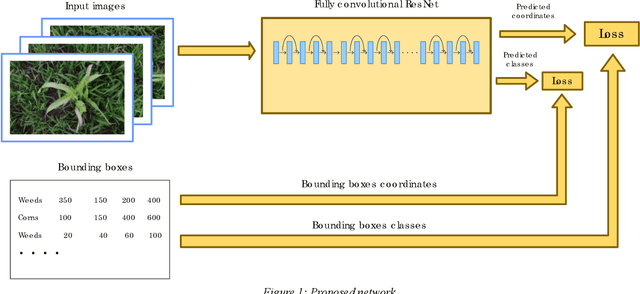


Abstract:The field of machine learning has become an increasingly budding area of research as more efficient methods are needed in the quest to handle more complex image detection challenges. To solve the problems of agriculture is more and more important because food is the fundamental of life. However, the detection accuracy in recent corn field systems are still far away from the demands in practice due to a number of different weeds. This paper presents a model to handle the problem of corn leaf detection in given digital images collected from farm field. Based on results of experiments conducted with several state-of-the-art models adopted by CNN, a region-based method has been proposed as a faster and more accurate method of corn leaf detection. Being motivated with such unique attributes of ResNet, we combine it with region based network (such as faster rcnn), which is able to automatically detect corn leaf in heavy weeds occlusion. The method is evaluated on the dataset from farm and we make an annotation ourselves. Our proposed method achieves significantly outperform in corn detection system.
Optimizing method for Neural Network based on Genetic Random Weight Change Learning Algorithm
Jun 05, 2019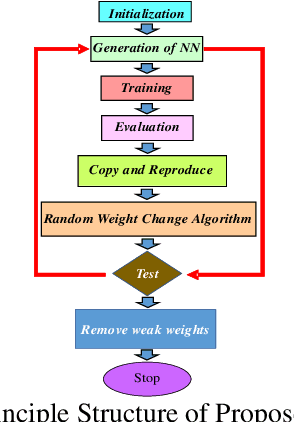
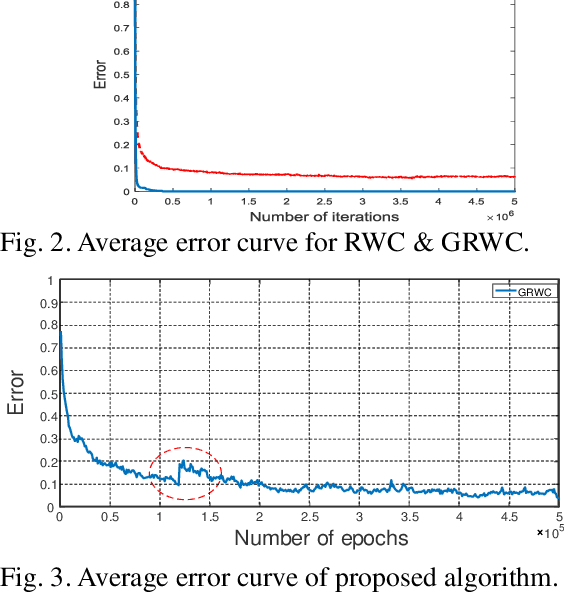
Abstract:Random weight change (RWC) algorithm is extremely component and robust for the hardware implementation of neural networks. RWC and Genetic algorithm (GA) are well known methodologies used for optimizing and learning the neural network (NN). Individually, each of these two algorithms has its strength and weakness along with separate objectives. However, recently, researchers combine these two algorithms for better learning and optimization of NN. In this paper, we proposed a methodology by combining the RWC and GA, namely Genetic Random Weight Change (GRWC), as well as demonstrate a seminal way to reduce the complexity of the neural network by removing weak weights of GRWC. In contrast to RWC and GA, GRWC contains an effective optimization procedure which is worthy at exploring a large and complex space in intellectual strategies influenced by the GA/RWC synergy. The learning behavior of the proposed algorithm was tested on MNIST dataset and it was able to prove its performance.
Genetic Random Weight Change Algorithm for the Learning of Multilayer Neural Networks
Jun 05, 2019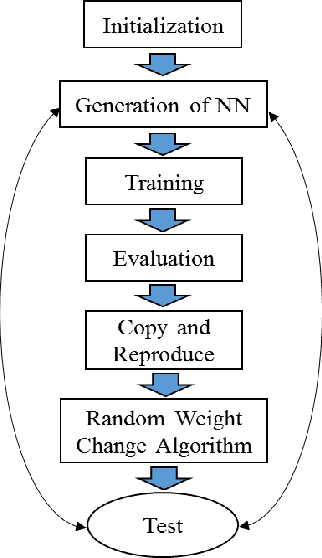
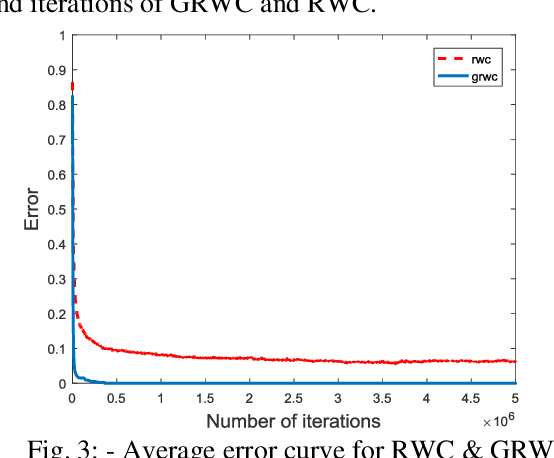
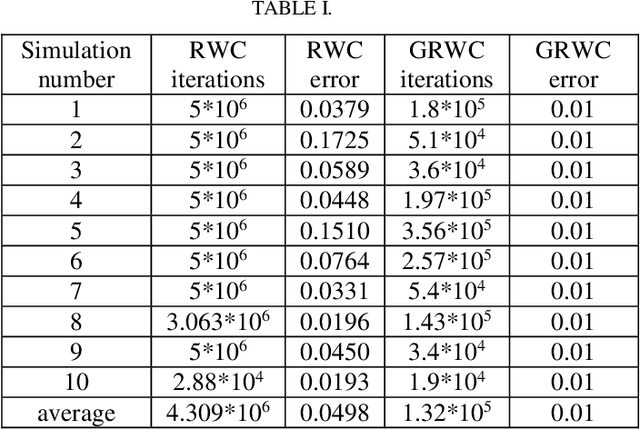
Abstract:A new method to improve the performance of Random weight change (RWC) algorithm based on a simple genetic algorithm, namely, Genetic random weight change (GRWC) is proposed. It is to find the optimal values of global minima via learning. In contrast to Random Weight Change (RWC), GRWC contains an effective optimization procedure which are good at exploring a large and complex space in an intellectual strategies influenced by the GA/RWC synergy. By implementing our simple GA in RWC we achieve an astounding accuracy of finding global minima.
Farm land weed detection with region-based deep convolutional neural networks
Jun 05, 2019
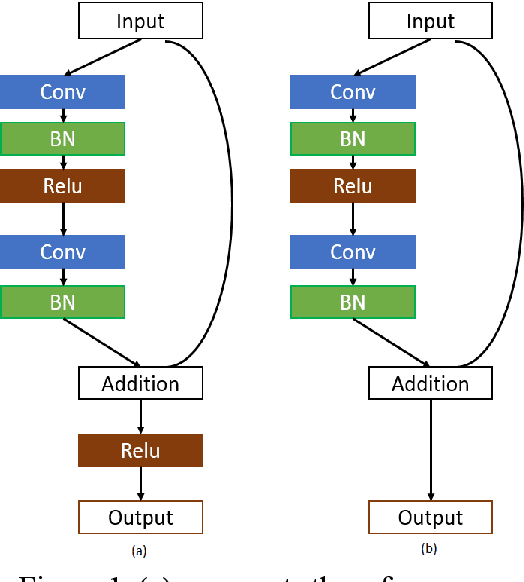

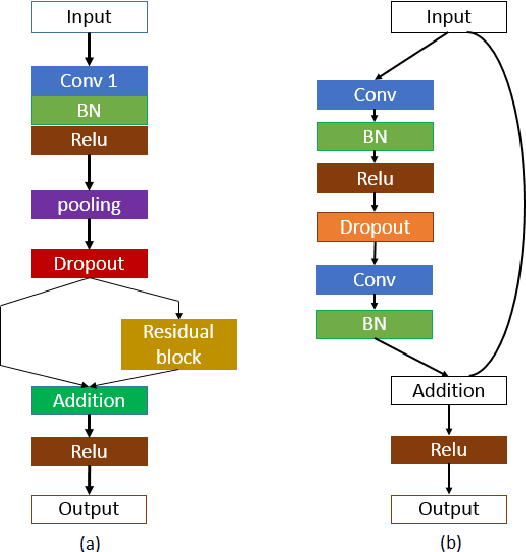
Abstract:Machine learning has become a major field of research in order to handle more and more complex image detection problems. Among the existing state-of-the-art CNN models, in this paper a region-based, fully convolutional network, for fast and accurate object detection has been proposed based on the experimental results. Among the region based networks, ResNet is regarded as the most recent CNN architecture which has obtained the best results at ImageNet Large-Scale Visual Recognition Challenge (ILSVRC) in 2015. Deep residual networks (ResNets) can make the training process faster and attain more accuracy compared to their equivalent conventional neural networks. Being motivated with such unique attributes of ResNet, this paper evaluates the performance of fine-tuned ResNet for object classification of our weeds dataset. The dataset of farm land weeds detection is insufficient to train such deep CNN models. To overcome this shortcoming, we perform dropout techniques along with deep residual network for reducing over-fitting problem as well as applying data augmentation with the proposed ResNet to achieve a significant outperforming result from our weeds dataset. We achieved better object detection performance with Region-based Fully Convolutional Networks (R-FCN) technique which is latched with our proposed ResNet-101.
Round Trip Time Prediction Using the Symbolic Function Network Approach
Aug 09, 2008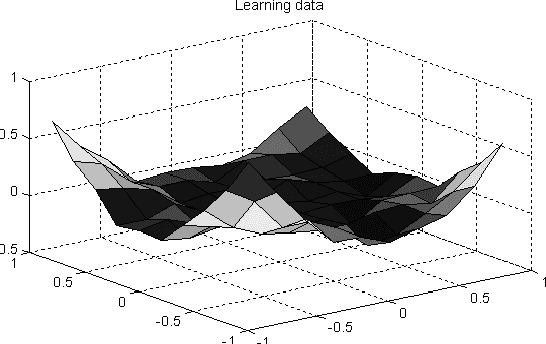

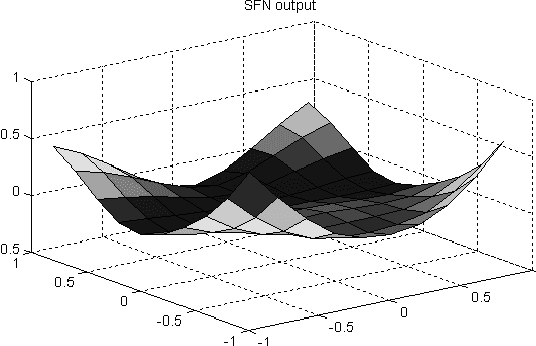
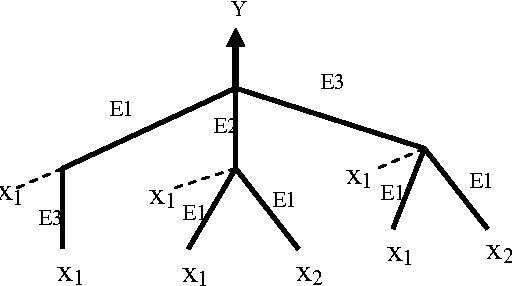
Abstract:In this paper, we develop a novel approach to model the Internet round trip time using a recently proposed symbolic type neural network model called symbolic function network. The developed predictor is shown to have good generalization performance and simple representation compared to the multilayer perceptron based predictors.
 Add to Chrome
Add to Chrome Add to Firefox
Add to Firefox Add to Edge
Add to Edge